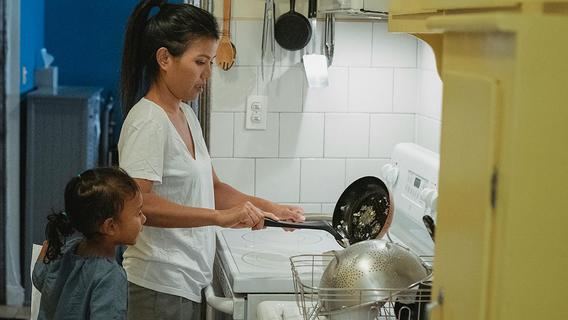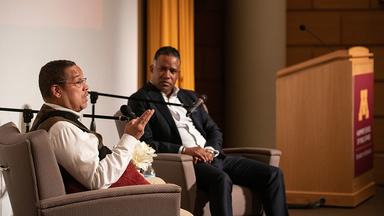
The phrase “women’s work” has been around for decades, and typically connotes that work performed by women is not as valuable as that performed by men.
In Minnesota today, even though a majority of women are employed, their work is still underpaid and undervalued—and they are underrepresented in elected office across the state—according to a new series of fact sheets released by the Center on Women, Gender, and Public Policy (CWGPP) at the Humphrey School of Public Affairs.
“Gender equality in the economic, political, and social spheres is one sign of a healthy democracy. Women in Minnesota continue to run into entrenched barriers to full and equitable participation in society,” says Professor Christina Ewig, CWGPP director and lead researcher.
“Minnesota is known as a state that is usually at the forefront of social policy issues, so it’s disappointing that there has been so little progress in key areas, like the gender wage gap, in the state over the past decade,” she adds. "On the other hand, there is room for celebration in other areas, like the significant increase in Black, Indigenous, Asian and Latina women in elected office.”
The research team analyzed data from a variety of sources, including the American Community Survey, the American Time Use Survey, and election data from the State of Minnesota, to more closely examine Minnesota trends in the gender wage gap, the value of unpaid carework, and gender and racial parity among elected officials.
Here is a summary of findings in each area.
Women in Minnesota earn less than men
In its Who Earns? A Fact Sheet on Gender and Employment in Minnesota, the Center finds that the gender wage gap in Minnesota has remained stagnant over the past 10 years, and is worse than in most other states.
Data from the Census Bureau’s American Community Survey shows that Minnesota is second in the nation for women’s labor force participation: 61 percent of women over 16 are in the workforce, and for mothers with children under the age of 6, that rate is nearly 80 percent.
Despite that, Center researchers found that Minnesota women who work full time year round earn just 81 cents for every dollar men make.
Race and ethnicity compound the wage gap. Minnesota women of all races earn less than men in their own racial or ethnic group. However, the wage difference compared to white men is twice as large for Hmong, Native American, and Latina women, and about three times greater for Somali women, than it is for white women.
Women in Minnesota perform more unpaid carework
Every day, in every household in Minnesota, someone prepares meals, washes dishes, does laundry, or takes care of children, without getting paid for it.

This unpaid carework is rarely treated for what it is: labor that provides a significant contribution to the state’s economic health, according to Ewig.
In the Who Cares? Fact Sheet on Unpaid Carework in Minnesota, researchers calculate that unpaid carework contributes $88.1 billion per year to Minnesota’s economy. Without these voluntary contributions, this work would have to be compensated. Unpaid carework is the backbone of our paid labor force because it allows others to carry out paid work and nurtures the next generation, Ewig says.
But there is an imbalance in the contributions made to that care, with women bearing greater responsibility than men. Women contribute 60 percent of that value, while men contribute 40 percent.
Ewig says the “male deficit” in carework can lead to diminished employment opportunities and lower earnings for working women over their careers.
“It’s primarily women who typically work part time, or drop out of the workforce altogether for periods of time, to care for children or the elderly,” she says. “Those gaps in their career paths mean they won’t get the same kind of wage gains, or opportunities for advancement, as full-time workers.”
The Center is the first to calculate the monetary contribution of unpaid carework to Minnesota’s economy. But the federal government may soon start tracking that data nationwide. Economists at Bard College recently released a report explaining how the government could measure unpaid carework, which they term "household production."
The Labor Department commissioned the report in 2021, as part of a larger initiative to revise its reporting on consumer expenditures. The agency will evaluate the report’s methodology with a goal of compiling and reporting household production data next year.
Women in Minnesota have less political power
To what degree do Minnesota’s elected officials reflect the gender, racial, and ethnic diversity of the state? The Who Leads? A Fact Sheet on Gender, Race, and Elected Representatives in Minnesota reports that there has been an increase in the number of women, people of color, and Native people running for and winning elections for office in Minnesota in recent years, but considerable work remains to achieve gender and racial parity across elected office.
Gender and racial gaps are consistently wider for city and county-level offices.
“Research has found that the gender and racial identities of elected representatives impact how they govern,” says Ewig. “From spending priorities, to legislative agendas, to voicing underheard perspectives, democracies are strengthened when officeholders reflect the diverse makeup of their constituencies.”
Impact of the research
The CWGPP’s research into gender disparities is geared toward providing policymakers and the broader public a better understanding of how public policy impacts gender equality in our local communities, throughout the United States, and around the world. Professor Ewig has presented the Center’s research findings at the Minnesota Legislature, which is currently considering several bills aimed at promoting pay equity and economic security.
Ewig says the goal is to “arm them with the data they need to make informed policy decisions and end Minnesota’s gender disparities.”

